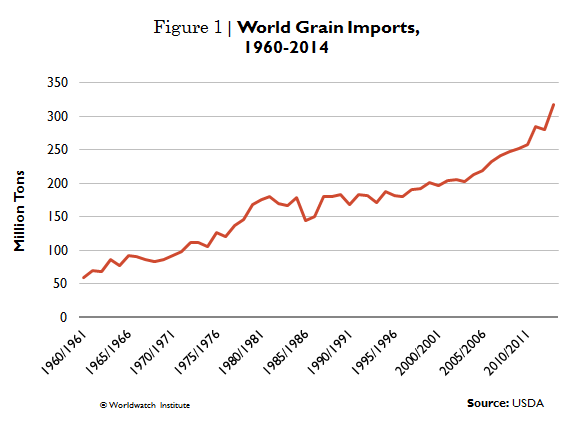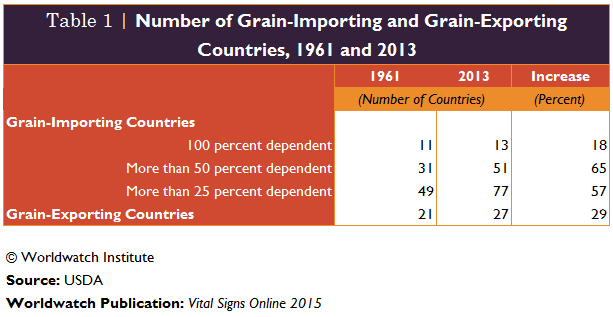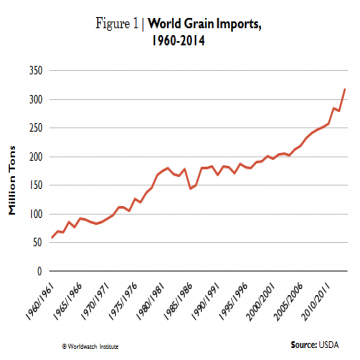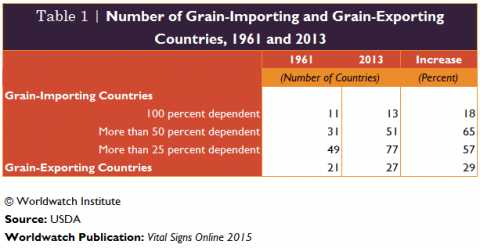Food Trade and Self-Sufficiency | Vital Signs Online
Gary Gardner
Imports of grain globally increased more than fivefold between 1960 and 2013 as more nations turned to international markets to help meet domestic food demand.1 (See Figure 1.) For some countries, the imported share of domestic grain consumption has risen substantially.2 In 2013, more than a third of the world’s nations—77 in all—imported at least 25 percent of the major grains they needed.3 This compares to just 49 countries in 1961, an increase of 57 percent over half a century.4 (See Table 1.)


Even more worrying, 51 countries—about a quarter of the community of nations—imported more than half of their grain in 2013, and 13 imported all of the grain they needed.5 Meanwhile, the number of grain-exporting countries expanded by just 6 between 1961 and 2013.6
Determining the food import dependence of people, rather than of countries, is more challenging, because imported food is often consumed in a few locations (such as a country’s capital city) rather than distributed equally among an entire population. But a 2013 study found that in 2000, some 950 million people—16 percent of the world’s population at the time—were using international trade to meet their food needs (although not just grain).7


